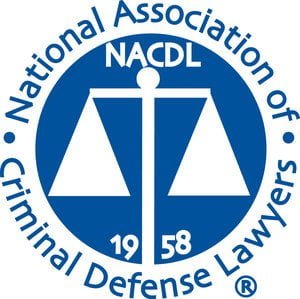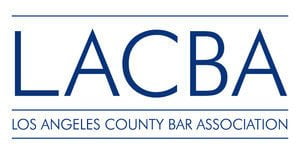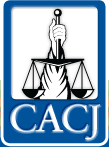Child abuse is considered a domestic violence crime and is subject to harsh penalties in California. This offense, defined in California Penal Code section 273d, can be charged as either a misdemeanor or a felony depending upon the facts and circumstances of the case and any prior criminal history of the defendant.

child abuse – torrance criminal defense attorney don hammond
Generally, prior criminal offenses are not admitted into evidence during criminal trials because they may be prejudicial. But during trial for a charge under 273d PC, the judge may allow evidence of prior child abuse which could establish a pattern of behavior.
California Penal Code 273d criminalizes and punishes the act of physically injuring or imposing cruel physical punishment upon a child, otherwise known as child abuse. Even though California has several child abuse-related statutes which deal with neglect, sexual abuse, and emotional abuse of a child, 273d deals specifically with physical abuse of a minor.
Child abuse is considered a domestic violence crime and is subject to harsh penalties in California.
Elements of the crime
To obtain a successful conviction under 273d PC, the prosecution must prove all of the following elements beyond a reasonable doubt:
- The defendant willfully inflicted cruel and/or inhuman punishment and/or an injury upon a child (defined as a person under the age of 18).
- The punishment and/or injury caused the child to suffer physical trauma.
- The actions were not part of any reasonable discipline of the child.
Willfully
Under this statute, “willfully” means acting on purpose and willingly, as opposed to carelessly or by accident. But there is no requirement that the defendant intended to break the law.
Cruel and/or inhuman punishment
Types of cruel and/or inhuman punishment are not defined specifically in 273d PC. However, it is generally accepted that the following examples of physical punishment of a child could constitute cruel and/or inhuman punishment:
- Hitting
- Punching
- Slapping
- Kicking
- Pushing
- Shaking
- Choking
- Burning
- Beating with an object
- Striking with a thrown object
It is important to note that spanking a child for ordinary disciplinary purposes—even with an object—is not child abuse if it is necessary and reasonable.
Physical trauma
A traumatic physical condition includes any wound or other bodily injury caused by physical force. Under this statute, any injury—even those as relatively minor as a scratch or small bruise—satisfies this element.
Prior acts of child abuse and/or domestic violence
Generally, prior criminal offenses are not admitted into evidence during criminal trials because they may be prejudicial – in other words, they may lead a jury to conclude the defendant is guilty mostly because they have committed similar crimes in the past, rather than clearly guilty of the currently charged offense.
But during trial for a charge under 273d PC, the judge may allow evidence of prior child abuse which could establish a pattern of behavior. It doesn’t matter if the defendant was convicted of these crimes or that there was a different victim. Any prior abuse against a child may be admissible.
To determine prior bad act admissibility, the judge will consider:
- Whether the evidence will unduly prejudice the jury.
- Whether there is any corroborating evidence for the earlier accusations.
- How much time has elapsed between the prior bad acts and current charges.
With respect to evidence of previous acts of domestic violence, the prosecutor can introduce prior accusations or convictions only if all of the following apply:
- The current charges involve the defendant’s own child and/or a child who regularly lives or used to regularly live with them.
- A prior accusation or conviction for domestic violence occurred against the defendant’s current or former spouse, current or former boyfriend/girlfriend, current or former live-in boyfriend/girlfriend, or parent of the defendant’s child.
- The prior allegations or convictions occurred within the past five years.
- The judge conducts a hearing to determine whether introducing this evidence is proper and appropriate.
When prior bad acts evidence is permitted in court, it is generally to demonstrate to the jury that the defendant has a propensity for violence. However, the judge typically instructs the jury that these prior acts on their own are insufficient to prove the current charges.
Offenses related to child abuse
California’s penal code includes several other sections which can be charged either instead of or along with child abuse. These laws include but are not limited to:
Criminal penalties for child abuse
Child abuse under 273d is a wobbler which can be charged as either a misdemeanor or a felony depending upon the facts and circumstances of the case and any prior criminal history of the defendant.
A misdemeanor conviction for child abuse is punishable by any or all of the following consequences:
- Up to one year in county jail.
- A fine of up to $6,000.
- Misdemeanor probation.
A felony conviction for child abuse is punishable by any or all of the following penalties:
- Two to six years in prison.
- A fine of up to $6,000.
- Felony probation.
- A “strike” under California’s Three Strikes law if the victim suffered great bodily harm.
Further, if the defendant has a prior 273a child abuse conviction, they will receive a sentencing enhancement of four years, unless the defendant finished serving any prison term for that offense more than ten years ago and the defendant has not been incarcerated for any other felony during that time.
Terms of probation
It is common for offenders convicted of violating 273d PC to receive probation. Probation conditions typically include:
- A minimum of three years of supervision.
- A court protective order, residence exclusion, and/or stay-away order to protect the victim.
- Successful attendance and completion of a child abuser counseling program.
- Random drug tests if the defendant was under the influence of alcohol and/or drugs at the time of the offense.
Successful compliance with all of the terms and conditions of probation may result in a sentence reduction. Similarly, failure to comply with probation conditions can result in additional penalties.
Legal defenses to child abuse
Child abuse is considered a serious crime, and is prosecuted vigorously in the interest of protecting children, who cannot protect themselves. Anyone accused of child abuse or related offenses should immediately seek out a qualified attorney. Only an attorney can provide legal advice which is appropriate for the unique facts and circumstances of a given case.
With that said, there are a few common defense strategies applicable to charges of child abuse.
- False allegations.
- Injuries caused by something other than child abuse.
- Parents’ right to discipline children.
- Police misconduct or investigation errors.
Because California mandates certain professionals – like physicians and educators – to report possible child abuse or face misdemeanor criminal charges themselves, false allegations are not uncommon, making obtaining effective legal representation all the more necessary.









